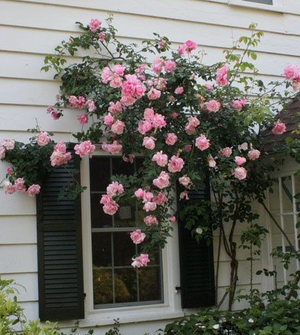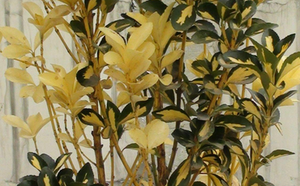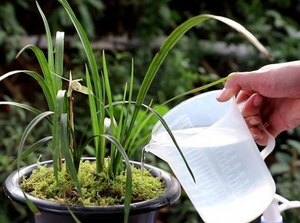How can I make a tree grow faster?

Two things beyond the usual good practices are very important to any tree:Soil, and beneficial fungi. One thing is paramount: the right tree for your location.
Two factors that can be modified or dealt with (to an extent) also come into play.
• Soil
In addition to providing the right conditions and using an organic, mild fertilizer according to instructions, you can have your soil tested to find out if it has the suitable mineral content for your tree.
If you already have a tree, search for information about your tree’s preferences. If there’s anything your tree needs that your soil lacks, apply the missing nutrient or mineral in the most organic manner possible. If it’s a question of acidity, the pH of your soil can be corrected with products made for that purpose, or with the application of natural substances like coffee grounds (to increase acidity).
You should also make sure you have a good match between your tree and the composition of your soil. I’ll mention three broad classes of soil, but there’s more to it than that.
If it rains a lot or is very dry where you live, soil composition is very important. (It’s important anyway, but in moderate weather conditions, not as much.) • Loam is usually the most desirable soil type for gardening in general, whether for ornamental purposes, or food production. Loam is a mixture of clay, sand, silt and organic matter (dead leaves, broken-down decayed wood). It’s loose like sandy soil, but compacts better when squeezed. The organic material makes it fertile, and easily worked, and along with the sand content, helps it drain well. It can lean toward one of the other soil types, clay or sandy, but is distinguished by what’s in it, and how it holds together after the squeeze test.
• Loam is usually the most desirable soil type for gardening in general, whether for ornamental purposes, or food production. Loam is a mixture of clay, sand, silt and organic matter (dead leaves, broken-down decayed wood). It’s loose like sandy soil, but compacts better when squeezed. The organic material makes it fertile, and easily worked, and along with the sand content, helps it drain well. It can lean toward one of the other soil types, clay or sandy, but is distinguished by what’s in it, and how it holds together after the squeeze test.
• Sandy soil is low in nutrients, but drains well. It can be improved with the addtion of compost, and the application of a mulch that will eventually break down and blend in.
• Clay soil is often rich in nutrients, and hold water well, sometimes too well. When there’s so much water in the soil that it crowds out air, the condition called “wet feet” arises, and many plants can’t tolerate wet feet for long. Harmful fungi and other critters that live in saturated soil can overcome the tree’s natural resistance when given the unfair advantage of perpetually saturated soil. There’s a flipside with clay soil. If allowed to dry out to the point of cracking, it becomes resistant to light watering and will need a good hard soak to begin allowing water back in.
• Beneficial Fungi There’s something you can add regardless of soil type that will help your trees roots benefit from the nutrients in its soil. It’s a type of fungus that occurs in natural plant habitats called Mycorrhizae. You can buy this type of fungus online and at some well-equipped garden centers. It’s usually sold as a brown granules that you scatter on the soil or possible insert in holes dug an appropriate distance from the trees trunk. (Instructions vary.)
There’s something you can add regardless of soil type that will help your trees roots benefit from the nutrients in its soil. It’s a type of fungus that occurs in natural plant habitats called Mycorrhizae. You can buy this type of fungus online and at some well-equipped garden centers. It’s usually sold as a brown granules that you scatter on the soil or possible insert in holes dug an appropriate distance from the trees trunk. (Instructions vary.)
Two factors that can be modified or dealt with (to an extent) also come into play.
• Soil
In addition to providing the right conditions and using an organic, mild fertilizer according to instructions, you can have your soil tested to find out if it has the suitable mineral content for your tree.
If you already have a tree, search for information about your tree’s preferences. If there’s anything your tree needs that your soil lacks, apply the missing nutrient or mineral in the most organic manner possible. If it’s a question of acidity, the pH of your soil can be corrected with products made for that purpose, or with the application of natural substances like coffee grounds (to increase acidity).
You should also make sure you have a good match between your tree and the composition of your soil. I’ll mention three broad classes of soil, but there’s more to it than that.
If it rains a lot or is very dry where you live, soil composition is very important. (It’s important anyway, but in moderate weather conditions, not as much.)

• Sandy soil is low in nutrients, but drains well. It can be improved with the addtion of compost, and the application of a mulch that will eventually break down and blend in.
• Clay soil is often rich in nutrients, and hold water well, sometimes too well. When there’s so much water in the soil that it crowds out air, the condition called “wet feet” arises, and many plants can’t tolerate wet feet for long. Harmful fungi and other critters that live in saturated soil can overcome the tree’s natural resistance when given the unfair advantage of perpetually saturated soil. There’s a flipside with clay soil. If allowed to dry out to the point of cracking, it becomes resistant to light watering and will need a good hard soak to begin allowing water back in.
• Beneficial Fungi

- baohaojing





